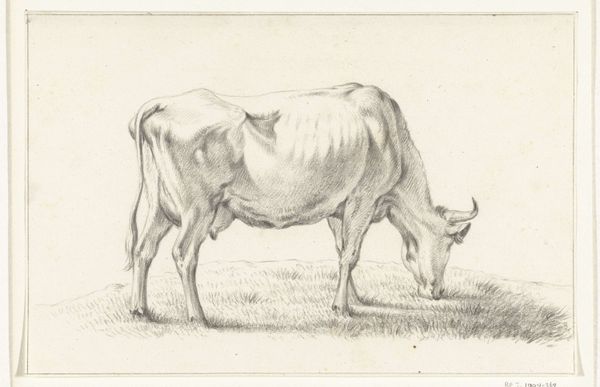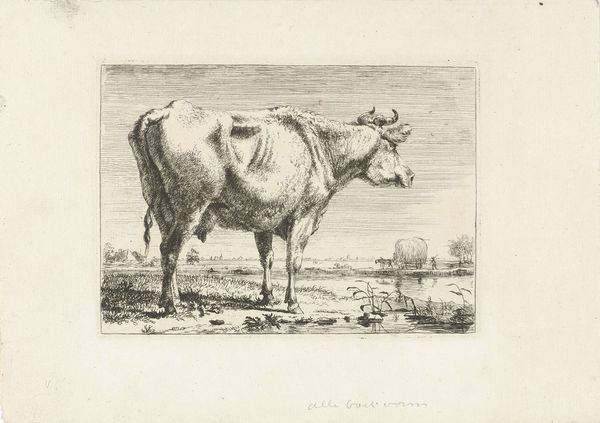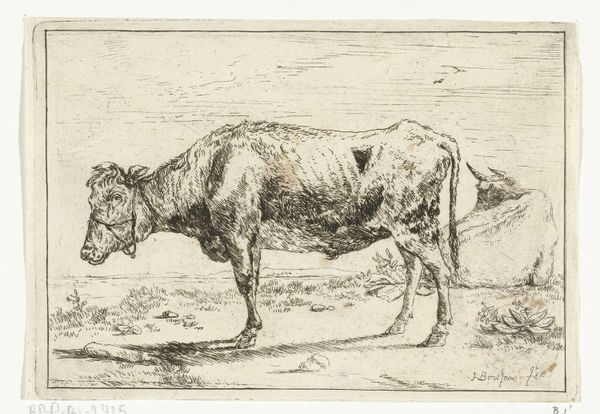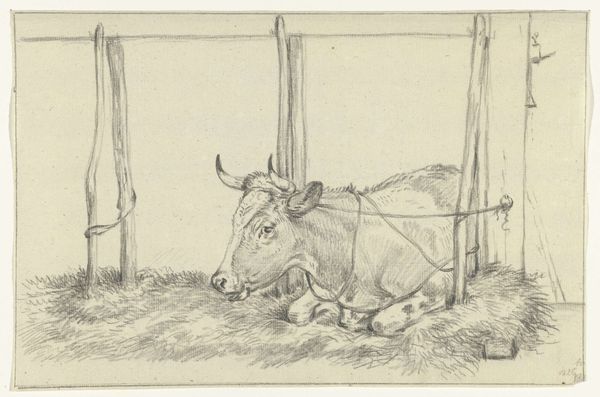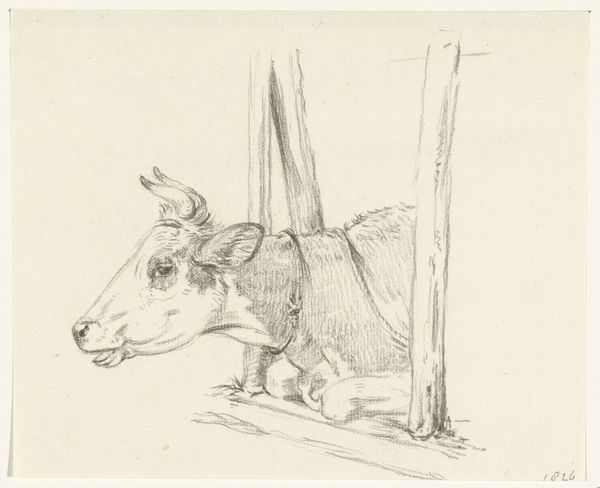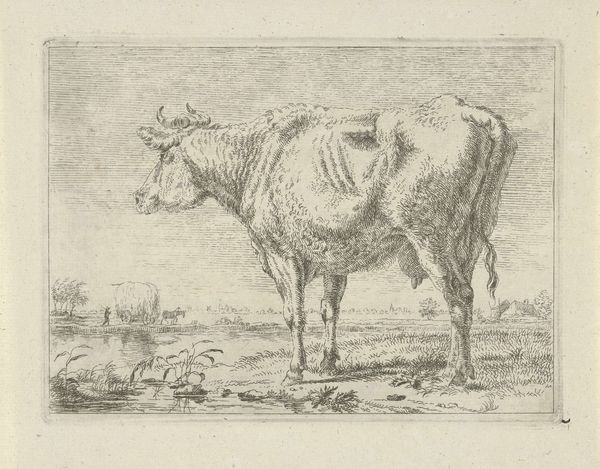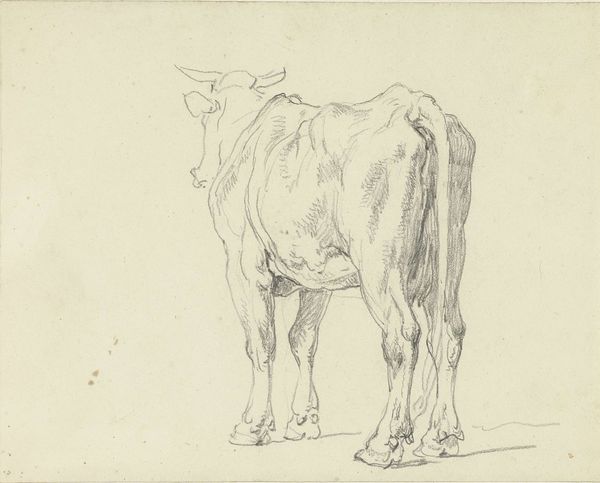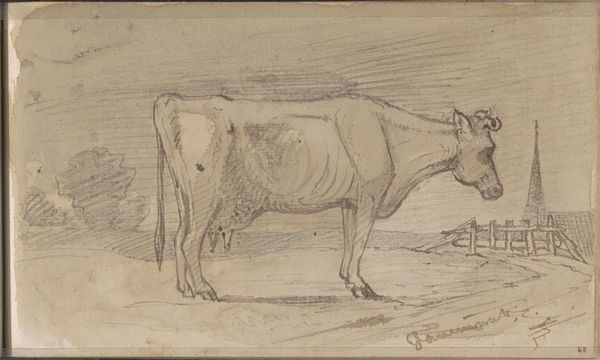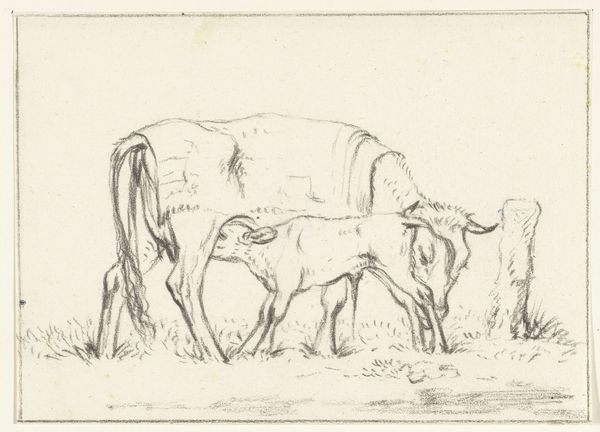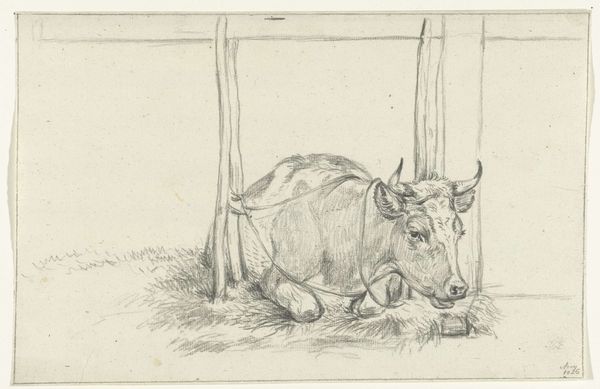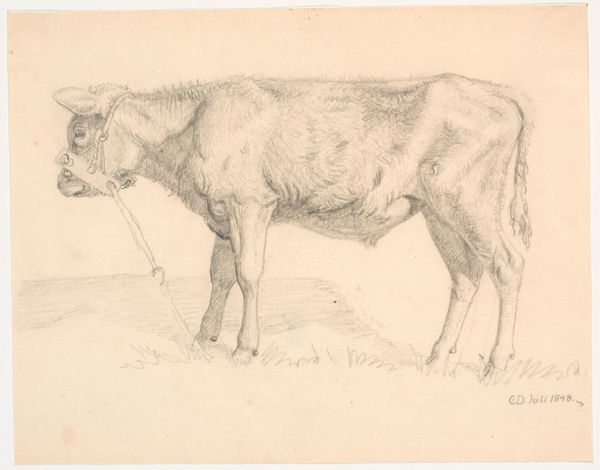
drawing, ink, pen
#
drawing
#
quirky sketch
#
mechanical pen drawing
#
pen sketch
#
landscape
#
personal sketchbook
#
ink
#
idea generation sketch
#
sketchwork
#
pen-ink sketch
#
sketchbook drawing
#
pen
#
genre-painting
#
storyboard and sketchbook work
#
realism
#
initial sketch
Dimensions: height 164 mm, width 256 mm
Copyright: Rijks Museum: Open Domain
Curator: This drawing, in pen and ink, is by Jan (II) Kobell. He titled it *Os voor een boerenkar gespannen*, which translates to "Ox pulling a farm cart." It dates to somewhere between 1788 and 1814. Editor: It's spare, isn’t it? Very few lines, almost like a diagram, but it still manages to evoke a mood. A feeling of...heavy work, maybe, the animal's weight and slow rhythm. Curator: Exactly. It's a quick sketch, almost like a note jotted in a visual diary. These drawings provided source material. This period saw a flourishing of "genre paintings" -- idealized images of peasant life and labor, but even studies such as this shed light on the conditions surrounding their making. The cart's rough timbers against the animal’s tired posture suggest those relations. Editor: You can practically smell the dust. The drawing really lingers in my mind like that... but looking at the overall image, it seems less a grand statement, and more…intimate? Like, here's this artist looking at the relationship between labor, animals and the rural world and figuring something out, right on the page. You can feel that questioning and thinking! Curator: Right. Kobell came from a family of artists. This places his exploration of labor, farm animals and landscapes within the rising market for idyllic pastoral paintings in the late 18th Century. These images both romanticized and, perhaps unwittingly, documented the economic and political realities shaping rural life. This simple pen and ink study allows a glimpse into how these artworks came to be. Editor: So, while seeming unassuming, it speaks to much larger forces—labor, the market for idyllic art. This little sketch reveals something more substantial. It has a beautiful tension to it: like an open book where someone jotted down a half-formed dream, still shimmering with possibility. Curator: Precisely! It is a reminder of how the quietest observations can sometimes speak the loudest.
Comments
No comments
Be the first to comment and join the conversation on the ultimate creative platform.
